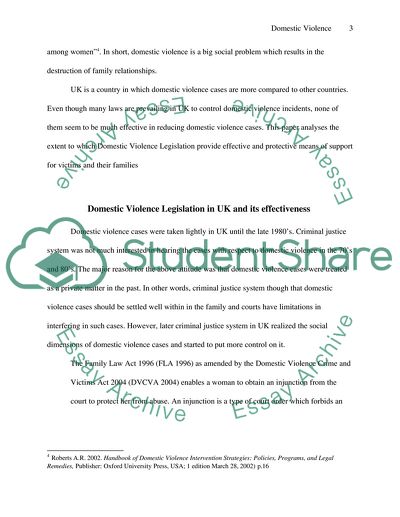Cite this document
(Domestic Violence Legislation and Its Effectiveness to Victims Research Paper, n.d.)
Domestic Violence Legislation and Its Effectiveness to Victims Research Paper. Retrieved from https://studentshare.org/social-science/1768073-family-law-to-what-extent-does-domestic-violence-legilation-provide-an-effective-and-protective-means-of-support-for-victims-of-domestic-violence-and-their-families
Domestic Violence Legislation and Its Effectiveness to Victims Research Paper. Retrieved from https://studentshare.org/social-science/1768073-family-law-to-what-extent-does-domestic-violence-legilation-provide-an-effective-and-protective-means-of-support-for-victims-of-domestic-violence-and-their-families
(Domestic Violence Legislation and Its Effectiveness to Victims Research Paper)
Domestic Violence Legislation and Its Effectiveness to Victims Research Paper. https://studentshare.org/social-science/1768073-family-law-to-what-extent-does-domestic-violence-legilation-provide-an-effective-and-protective-means-of-support-for-victims-of-domestic-violence-and-their-families.
Domestic Violence Legislation and Its Effectiveness to Victims Research Paper. https://studentshare.org/social-science/1768073-family-law-to-what-extent-does-domestic-violence-legilation-provide-an-effective-and-protective-means-of-support-for-victims-of-domestic-violence-and-their-families.
“Domestic Violence Legislation and Its Effectiveness to Victims Research Paper”, n.d. https://studentshare.org/social-science/1768073-family-law-to-what-extent-does-domestic-violence-legilation-provide-an-effective-and-protective-means-of-support-for-victims-of-domestic-violence-and-their-families.


